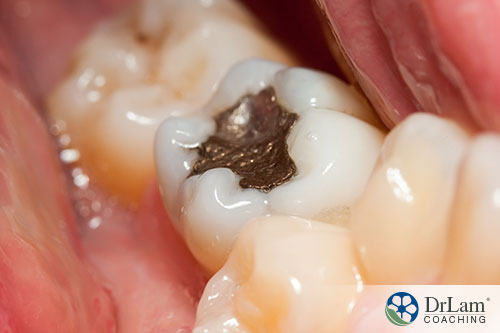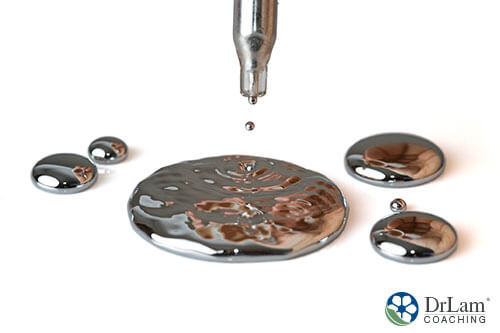Do you know what your fillings are made of? Fillings have been used for a long time to stop decay and protect your teeth against further damage. It’s only recently that people have become concerned about the substances that make up fillings. Amalgam fillings have been used for more than 150 years. They’re a very strong and effective barrier against decay. Unfortunately, they may also contain elements that put your health at serious risk.
 Fillings are a small piece of material that’s used to fill a tooth cavity. There are a variety of different fillings available these days, including amalgam fillings. These are made using a combination of different materials, which makes them stronger and more durable than most other types of fillings. They’re composed of about 50 percent liquid mercury, tin, silver, powdered alloy metals, and copper. Around 100 million Americans have amalgam fillings in their mouths, and they’re the number one filling choice for dentists. So, if you have fillings, then they’re probably amalgam and that could be a problem.
Fillings are a small piece of material that’s used to fill a tooth cavity. There are a variety of different fillings available these days, including amalgam fillings. These are made using a combination of different materials, which makes them stronger and more durable than most other types of fillings. They’re composed of about 50 percent liquid mercury, tin, silver, powdered alloy metals, and copper. Around 100 million Americans have amalgam fillings in their mouths, and they’re the number one filling choice for dentists. So, if you have fillings, then they’re probably amalgam and that could be a problem.
Mercury is highly toxic and can do a lot of damage to the human body. It can turn into a vapor that’s inhaled by dentists and dental staff during procedures. And when it’s placed in your mouth, this risk extends to you as well. This mercury can be released into your body every time you chew when you have amalgam fillings. It’s also released when fillings are placed or removed from your mouth. And because there is no safety margin when it comes to mercury, even a little exposure can be hazardous to your health. Mercury easily moves through your body and its cells. And its effects are cumulative. So, the longer you have your fillings, the more mercury you will probably have in your system.
The simple answer is somewhat, yes. Mercury poisoning is a serious health concern around the world and amalgam fillings are a primary contributing cause to that. In 2009, the Food and Drug Administration classified mercury and amalgam as class II threats. This means they’re a greater risk than some other types of fillings. Studies into these fillings found that they release low levels of mercury vapor. These levels tend to be highest after placement and removal of the fillings but decline with ongoing use.
Despite these obvious health risks, amalgam fillings are still very common, though there are several better alternatives. This lack of action may be because of the cost in terms of time and money that would have to go into removing and replacing these fillings. Millions of people would have to have their fillings assessed, removed, and replaced. And most people just can’t afford the time and money this process would take.
A small amount of mercury, between 2 and 20 micrograms a day, is released every time you chew. Other things that can cause a release of mercury include dental procedures or heat. So, every time you chew gum or have a cup of tea, mercury could be released into your system. The natural flora in your mouth can also change the mercury into other forms such as methylmercury, which can be incorporated into your body tissues.
Mercury is extremely dangerous and has been linked to brain, fertility, neurological, renal, urological, and kidney problems. These issues tend to be even more severe in fetuses and young children. Some of the health problems associated with mercury exposure from amalgam fillings are:

These issues can vary depending on individual body chemistry and condition. They can also depend on factors like the number of fillings, how long they’ve been in place, and how they’re stimulated.
There are good alternatives to amalgam fillings. If you have a cavity in your teeth then make sure you discuss other options with your dentist. However, if you think that you already have amalgam fillings, then you need to visit a dental practitioner and have your fillings assessed. They will be able to work with you to design a plan for removing and replacing them as safely as possible.
Your dental practitioner may also be able to give you advice and support as your body detoxifies from the mercury exposure. When you get your fillings removed, your body’s mercury levels will increase during the process. This may worsen any chronic conditions you have temporarily. However, mercury levels should drop within a couple of weeks after the procedure. If you have Adrenal Fatigue Syndrome (AFS), then you need to be especially cautious during this time.
If you have AFS, it’s important that you speak to a medical professional who’s aware of the disorder before you have your amalgam fillings removed. This procedure can cause a spike in mercury levels throughout your body, worsening chronic conditions and symptoms. If you have AFS, this will cause additional stress and further unbalance your body’s circuits. It could even be severe enough to cause an adrenal crash, so proceed cautiously and with expert guidance.
 The mercury in amalgam fillings is a heavy metal that can cause the human body a lot of stress. It can damage organs and cells and cause increased activity in the Detoxification circuit, which is responsible for ridding the body of toxins. All of these factors may cause or worsen adrenal fatigue, which is caused by stress and overwork.
The mercury in amalgam fillings is a heavy metal that can cause the human body a lot of stress. It can damage organs and cells and cause increased activity in the Detoxification circuit, which is responsible for ridding the body of toxins. All of these factors may cause or worsen adrenal fatigue, which is caused by stress and overwork.
AFS occurs when the NeuroEndoMetabolic (NEM) Stress Response is active over long periods because of ongoing stress. This is a very unnatural state that creates a high ongoing demand for cortisol, also known as the stress hormone. Your body needs cortisol during times of stress, but when this demand is ongoing, the adrenal glands can start to struggle to produce this hormone at the necessary levels. And this is where the problems begin.
Cortisol affects every circuit in the body, so it isn’t uncommon for people with AFS to experience a wide range of symptoms and problems as AFS progresses. The key to recovery is to lower your stress levels and deactivate the NEM stress response. This will allow the body’s circuits to return to their natural settings. However, this can be easier said than done.
The mercury in amalgam fillings can negatively impact the Detoxification circuit, particularly when you have AFS. This circuit helps to rid the body of toxins such as reactive metabolites that the body produces as a result of stress. It includes the immune system, the liver, and the extracellular matrix (ECM). When the Detoxification circuit is healthy, these three systems work in concern behind the scenes. But when the circuit becomes unbalanced, the results can be frightening and dangerous.
When you have AFS, the three systems in the Detoxification Circuit start to struggle to do their jobs. The immune system becomes overactive, causing high inflammation levels and the production of more harmful metabolites. This increases the liver’s workload. This is the organ responsible for rendering metabolites inert and expelling them from the body. When the liver struggles with its tasks, toxins build up in the body and clog the ECM, hampering movement throughout the body and the transmission of chemical messengers. The ECM becomes clogged with toxins, which further activates the immune system and creates more inflammation. Basically, it’s a never-ending circle of dysfunction and increasingly ill-health.
 The mercury in amalgam fillings is a source of stress and damage that the body just doesn’t need. Toxins are forced into the body because of poor eating habits, air pollution, medications, unclean water, and hormones and chemicals in foods. If you’re otherwise healthy, then your Detoxification circuit will find a way to cope with these toxins and get them out of the body. But when this circuit goes out of balance, these toxins often linger, increasing stress levels and causing more work for the Detoxification circuit.
The mercury in amalgam fillings is a source of stress and damage that the body just doesn’t need. Toxins are forced into the body because of poor eating habits, air pollution, medications, unclean water, and hormones and chemicals in foods. If you’re otherwise healthy, then your Detoxification circuit will find a way to cope with these toxins and get them out of the body. But when this circuit goes out of balance, these toxins often linger, increasing stress levels and causing more work for the Detoxification circuit.
If mercury builds up in your system because of your amalgam fillings, it will force your body to react. When healthy, your body can rid itself of small amounts of mercury. But if you have AFS, then your liver may already be congested and unable to perform its duties as quickly or effectively as usual. This can lead to a build-up of mercury that will further dysregulate the liver, worsen the toxic build-up in the ECM, and exacerbate the overactivity of the immune system. In this situation, the body will fail to expel the mercury, which may lead more quickly to related symptoms like fatigue. The levels of mercury in your body may also reach toxic levels faster because of the Detoxification circuit dysfunction. This can be very dangerous as well as bad for your AFS and circuit health.
If you have amalgam fillings, then there may be cause for some concern. Without a dental examination, you won’t be able to tell if your fillings are putting your health at risk. That’s why you should have your mouth checked by a dental professional as soon as possible. They will be able to assess the composition and safety of your fillings and make recommendations to preserve your long-term dental and overall health.
© Copyright 2021 Michael Lam, M.D. All Rights Reserved.
Amalgam fillings usually contain mercury, an element that is linked to many health concerns and can also be deadly in high amounts. There is a possibility that these fillings can leak mercury gas into your mouth and tissues, causing more issues over time.
